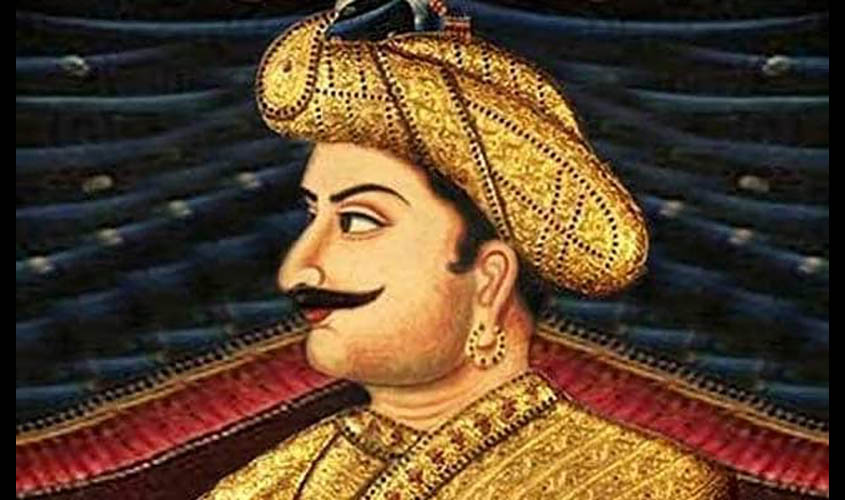The dogged persistence of the Karnataka government to continue with the Tipu Sultan celebrations for a fourth year in a row denotes more than an attempt to confer credibility on a supposedly noted historical figure. The rather sparse attendance (both the CM and deputy CM were AWOL) at the official function on 10 November, indicates the Congress party’s own ambivalence to this issue. Nevertheless, a critical appraisal of Tipu is warranted to set the record straight.
Was Tipu Sultan, the legendary ruler of Mysore (1750-1799) a courageous fighter who rallied against the British in defence of indigenous national interest? Or was he a religious zealot intent on bloody and coerced proselytization? Can he be justifiably eulogised as a Kannada icon? And is he really the hapless victim of a modern-day smear campaign orchestrated by right-wing ideologues?
These are the million-dollar questions that cry out for answers in light of the Karnataka government’s decision to persist with this contentious commemoration.
First, Tipu Sultan stands condemned, not by the motivated accusations of his antagonists, but by the evidence of his own words.
Listed below are excerpts from Tipu’s own correspondence, reviewed by K.M. Panicker (a noted Kerala historian) in Basha Posini magazine in August 1923 (Tipu Sultan: Villain or Hero, edited by Sita Ram Goel):
1. Letter dated 22 March 1788, to Abdul Kadir: “Over 12,000 Hindus were honoured with Islam. There were many Namboodri Brahmins among them. This achievement should be widely publicised among the Hindus. Then the local Hindus should be brought before you and converted to Islam. No Namboodri Brahmin should be spared.”
2. Letter dated 14 December 1788, to his army chief in Calicut: “I am sending two of my followers with Mir Hussain Ali. With their assistance, you should capture and kill all Hindus. Those below 20 may be kept in prison and 5,000 from the rest should be killed from the tree-tops. These are my orders.”
3. Letter dated 18 January 1790, to Syed Abdul Dulai: “…almost all Hindus in Calicut are converted…”
These excerpts indicate a brutality that is unpardonable; they cannot be wished away as reminiscent of the times especially when it involves the killing of such a large number of people. Moreover, the fact that these excerpts were published in 1923, when there was no raging controversy on the role of Tipu Sultan and hence no dubious motive for their publication, makes these statements all the more plausible.
Christians too were the victims of his religious xenophobia. Fra Barthoelomeo, a Portuguese traveller who happened to be in the vicinity of Tipu’s campaign in 1790 writes (A Voyage to the East Indies): “That barbarian Tipu Sultan tied the naked Christian and Hindus to the legs of elephants and made the elephants to move around till the bodies of the helpless victims were torn to pieces.
“Temples and churches were ordered to be burned down, desecrated, and destroyed…”
Francois Fidele Ripaud de Montaudevert, a French soldier who had travelled to Mysore from Mauritius to aid Tipu Sultan against the British was totally disillusioned with him. In documents discovered in Paris in 1988 he writes: “I’m disturbed by Tipu Sultan’s treatment of these most gentle souls, the Hindus… Kozhikode was then a centre of Brahmins and had over 7,000 Brahmin families living there. Over 2,000 Brahmin families perished as a result of Tipu Sultan’s cruelties. He did not spare even women and children.” (Outlook. The Tyrant Diaries. 15 April 2013).
Tipu Sultan was no doubt a valiant fighter who vigorously opposed the British, but that cannot mitigate the fact that he was also by all accounts a figure incompatible with modern secular times. An isolated report of support for the Sringeri Mutt cannot balance out his diabolical deeds to Hindu society and transform him into a secular icon.
Finally, Tipu Sultan’s much proclaimed status as a Kannada icon proves to be a shaky one when one scrutinises history. In reality, he spared no efforts to make Persian, the lingua franca of Karnataka at the cost of Kannada. Dr Suryanath Kamat, chairman, Karnataka Itihasa Academy quotes a book written by a historian Kirmani, Tipu’s contemporary, to indicate that Tipu passed an order in 1792 making Persian the official language in place of Kannada (Deccan Herald, 22 September 2006). Does this make him a Kannada aficionado?
Let us credit him for his valour that he showed against the British. But when the evidence for his wrongdoing is so overwhelming, he needs to be relegated to a footnote in the broader history of India.
The coalition government in Karnataka has erred in continuing the Tipu Jayanti celebrations. It is an extravaganza that is misplaced, erroneous and insensitive to Hindus and Christians in particular and Kannadigas as a whole; one that Karnataka could have done without in the interest of communal harmony, historical objectivity and state expenditure.

